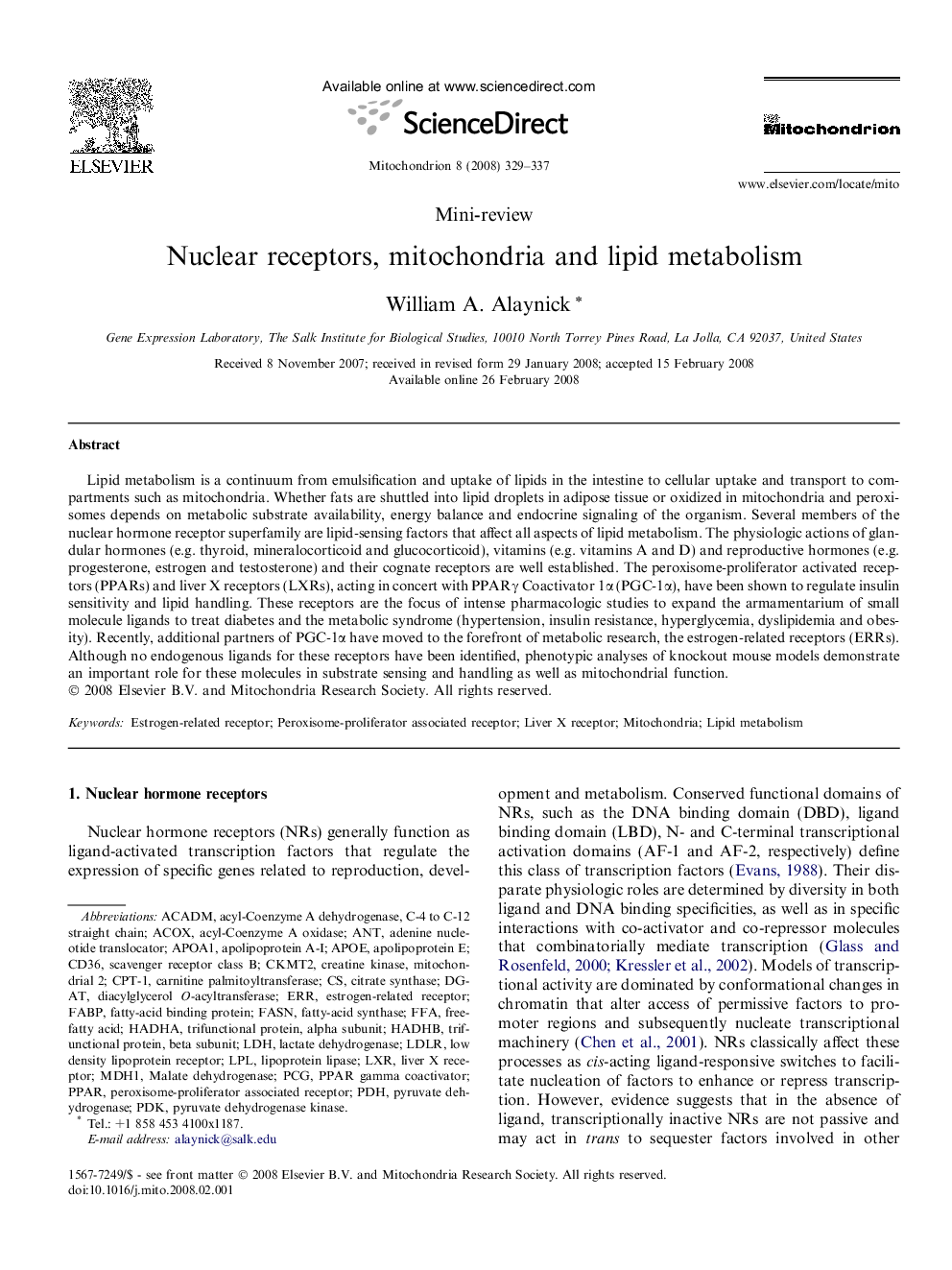| کد مقاله | کد نشریه | سال انتشار | مقاله انگلیسی | نسخه تمام متن |
|---|---|---|---|---|
| 2068996 | 1078370 | 2008 | 9 صفحه PDF | دانلود رایگان |

Lipid metabolism is a continuum from emulsification and uptake of lipids in the intestine to cellular uptake and transport to compartments such as mitochondria. Whether fats are shuttled into lipid droplets in adipose tissue or oxidized in mitochondria and peroxisomes depends on metabolic substrate availability, energy balance and endocrine signaling of the organism. Several members of the nuclear hormone receptor superfamily are lipid-sensing factors that affect all aspects of lipid metabolism. The physiologic actions of glandular hormones (e.g. thyroid, mineralocorticoid and glucocorticoid), vitamins (e.g. vitamins A and D) and reproductive hormones (e.g. progesterone, estrogen and testosterone) and their cognate receptors are well established. The peroxisome-proliferator activated receptors (PPARs) and liver X receptors (LXRs), acting in concert with PPARγ Coactivator 1α (PGC-1α), have been shown to regulate insulin sensitivity and lipid handling. These receptors are the focus of intense pharmacologic studies to expand the armamentarium of small molecule ligands to treat diabetes and the metabolic syndrome (hypertension, insulin resistance, hyperglycemia, dyslipidemia and obesity). Recently, additional partners of PGC-1α have moved to the forefront of metabolic research, the estrogen-related receptors (ERRs). Although no endogenous ligands for these receptors have been identified, phenotypic analyses of knockout mouse models demonstrate an important role for these molecules in substrate sensing and handling as well as mitochondrial function.
Journal: Mitochondrion - Volume 8, Issue 4, September 2008, Pages 329–337